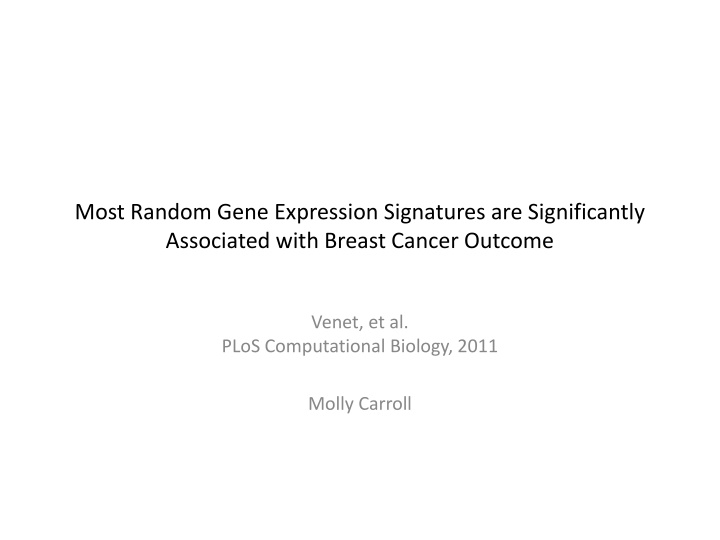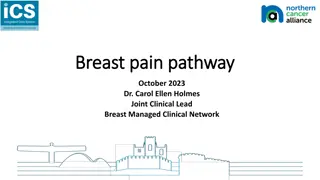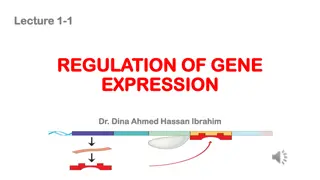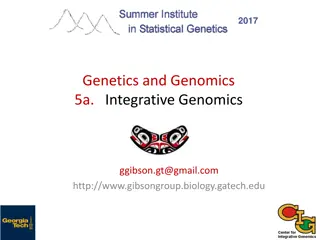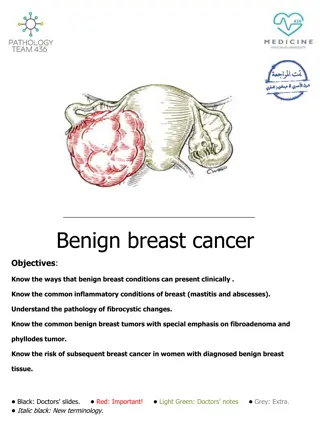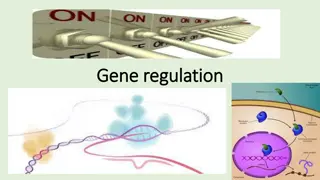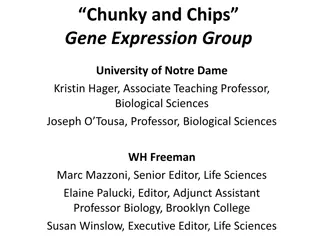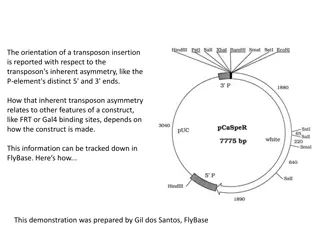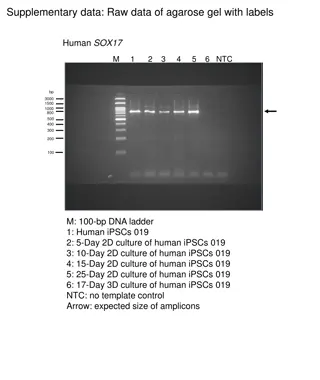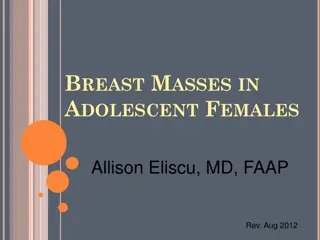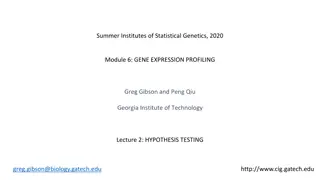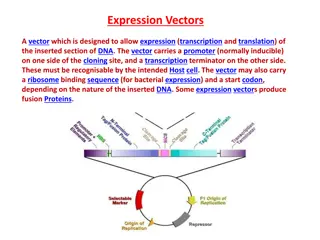Most Random Gene Expression Signatures are Significantly Associated with Breast Cancer Outcome
Study explores association of random gene expression signatures with breast cancer outcome, addressing methods, confounding variables, and advancements in research techniques. Results show correlation with various factors and compare published signatures with random ones.
Download Presentation

Please find below an Image/Link to download the presentation.
The content on the website is provided AS IS for your information and personal use only. It may not be sold, licensed, or shared on other websites without obtaining consent from the author.If you encounter any issues during the download, it is possible that the publisher has removed the file from their server.
You are allowed to download the files provided on this website for personal or commercial use, subject to the condition that they are used lawfully. All files are the property of their respective owners.
The content on the website is provided AS IS for your information and personal use only. It may not be sold, licensed, or shared on other websites without obtaining consent from the author.
E N D
Presentation Transcript
Most Random Gene Expression Signatures are Significantly Associated with Breast Cancer Outcome Venet, et al. PLoS Computational Biology, 2011 Molly Carroll
Biomedical Research Methods 1 2 Characterize mechanism in the model Derive a marker that changes when the mechanism is altered Show correlation of marker with disease outcome 3 Hazard Ratio: chances of an event (death) occurring in variable condition chances of an event (death) occurring in control condition Ding, L. et al. Nature (2008). Paik, PK. et al. Journal of Clinical Oncology (2011)
Confounding Variable Problem Some signatures are markers of mechanisms- ie. Epithelial mesenchymal transition Several signatures have equivalent prognostic outcome Are all mechanisms independent drivers or is there a confounding factor? (Proliferation?)
Advances made in Methods Step 2: Increase in genome-wide expression profiling leading to automated screen for markers and increased signatures Step 3: Rise of cohorts with genome-wide expression profiles and patient follow-ups Need to test negative controls to check relation of signature to outcome Typical: Signature of interest more strongly related to outcome than signature of no oncological rationale Proposed: Random signature is more likely to be correlated with cancer outcome than not
Results- Fig 1 Post-prandial laughter sig. Localization of skin fibroblasts sig. Social defeat in mice sig.
Results- Fig 2 Compared published breast cancer signature p-value of association with random signatures of equal size Used NKI cohort of patients Increasing size
Methods: Meta-PCNA and Data Adjustment Samples (j) m-PCNA index Pearson correlation between PCNA and all genes in by Ge et al. via genome-wide expression profiling of healthy tissues 131 genes were top 1% that correlated with PCNA=> meta- PCNA sig. m-PCNA index of tissue: median expression of the genes Used linear regression (R s lm function) to fit a sample s individual gene expression to m- PCNA gene j mPCNA_j g_ij 1.957143 3.957143 2.157143 2.857143 3.157143 3.457143 5.657143 1 2 3 4 5 6 7 0.1 0.3 0.75 1.1 1.3 2.1 3.3 gi gij Genes m-PCNA weight j g_ij 1.957143 3.957143 2.157143 2.857143 3.157143 3.457143 5.657143 linear? fit 2.279579 2.455137 2.850143 3.157369 3.332927 4.035159 5.088507 residual_j -0.32244 1.502006 -0.693 -0.30023 -0.17578 -0.57802 0.568636 1 2 3 4 5 6 7 mPCNA? vs? g_i? 6? y? =? 0.8779x? +? 2.1918? 5? Residual_ j 4? g_i? 3? 2? 1? 0? 0? 0.5? 1? 1.5? 2? 2.5? 3? 3.5? mPCNA? g_ij=weight*(mPCNAj) + intercept +error_ij mPCNA? vs.? adjusted? g_i? 6? 5? adjusted? g_i? 4? adj_g_ij = avg(g_i) + error_ij 3? 2? 1? 0? 0? 0.5? 1? 1.5? 2? 2.5? 3? 3.5? mPCNA?
Results: Figure 3 and Supplmental Abba Signature Korkola Signature
Results: Figure 5 ESCM: signature of gene sets associated with embryonic stem cell identity from Wong et al. Purging of cell cycle genes did not eliminate high correlation of ESCM with PCNA metagene Correlations with meta-PCNA extend far beyond cell-cycle genes
Results: Figure 6 Hazard Ratio Log rank p-values
Conclusions and Moving Forward Random single and multiple genes expression markers have high probability to be associated with BC outcome Most published signatures are not significantly more associated with outcome than random signatures Meta-PCNA metagene integrates most of the outcome-related information in BC transcriptome This information is present in 50% of the transcriptome and can t be removed by purging cell cycle genes from a signature Development of larger cohorts with various sub-types of a cancer included may help find better prognostic signatures The NKI cohort represented bulk tumors from a wide spectrum of patients Couldn t use NKI cohort to detect transcriptional signatures in specific cells (stromal, epithelial, etc) or patient groups (ER+, HER2 amplification)
